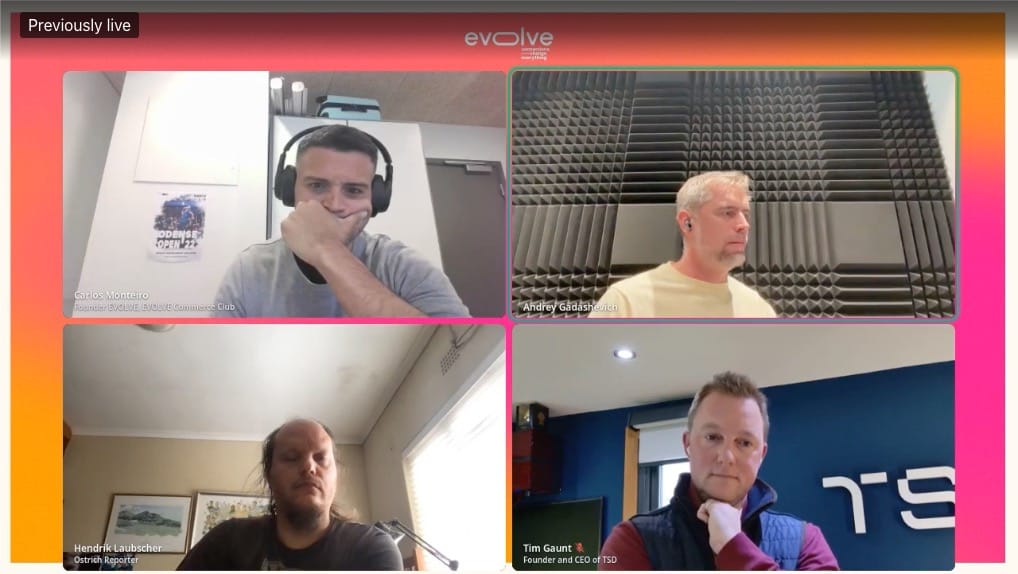Why Product Development Makes Sense for Agencies (And How to Actually Succeed)
Agencies have all the skills to build products. So why don't more do it? After 15 years building products at TSD, here's what we learned about first to market vs perfect, resourcing traps, and why watching clients succeed whilst you wait for their next spend hurts more than you'd think.

Yesterday I joined Expert Session #82 with the EVOLVE Commerce Club, where Andrey Gadashevich and Hendrik Laubscher were talking about how agencies can move into product development, particularly Shopify apps. About 20 minutes in, I found myself unexpectedly sharing the stage.
It was exciting to get that platform, though I felt I was slightly gate-crashing Andrey's session. But the conversation hit on something we've been wrestling with at TSD for over 15 years: how do you build products whilst running an agency?
The discussion revealed something encouraging. Other agencies are facing the same challenges we've navigated. The questions from the session, the concerns about resourcing, the platform dependency risks, the struggle to get agencies (not just merchants) interested in your product - these are all battles we've fought.
So I'm writing this series to share what we've learned. Not because we've cracked it perfectly (we haven't), but because after 15+ years and multiple products - some successful, some shelved - we've got some hard-won insights that might save you time.
The Emotional Reality Nobody Mentions
Here's the bit that doesn't make it into conference talks: watching your clients succeed whilst you wait for their next spend hurts.
When you're an e-commerce agency with clear ROI for clients and direct monetary income from projects, you often sit on the sidelines whilst they rake in revenue from the work you've done. You're genuinely thrilled for their success. But you're also acutely aware that your growth is entirely tied to their appetite to spend.
Some agencies tie their fees to client revenue. That's one approach. At TSD, we've always believed clients will spend with us when they feel they're getting value from their website. Over 20 years, this has served us well. But organic growth is slow.
A few years back, we had a client add subscriptions to their business. Fantastic success. It now accounts for about a third of their monthly income. But the increased demand and server load took months (years, really) before they accepted that investing in technology fixes would help. They're spending now, which is great. But watching that delay was frustrating.
Equally frustrating? When you know you have solutions that could generate serious money - subscription flows, for instance - but clients won't invest because they can't see the value yet. Yes, that's partly on our marketing. But it's worth acknowledging.
This is why productising parts of your agency makes sense. You're in a unique position to spot needs across multiple clients that solo entrepreneurs never see. The question is whether you can execute on those opportunities without compromising your core business.
The Warning Signs You Need to Hear First
Agencies have the complete skill set to design, develop, and deliver products. That's both your advantage and your trap.
The temptation is to make your product perfect. Better than the competition. More features. More polish. More everything.
Reality check:
First to market often beats perfect to market.
You can get feedback from actual customers instead of guessing what they'll want. Ship something decent and iterate.
The second trap:
Don't treat products like side projects.
We've watched many agencies over the years attempt to build products without properly resourcing them. As client demands increase, the side projects stay exactly that - incomplete side projects.
One that springs to mind: an excellent agency management software called Zookeeper that a friend was building. Genuinely good product. Got shelved because client work took priority.
You have to treat the product as a client of the business. Give it the same attention as another client spending equivalent amounts. If you're not willing to do that, don't start.
What's Coming in This Series
Over the next three posts, I'll share:
From Idea to Launch - The process we use to validate ideas, estimate market size, and decide what's worth building. You'll see how we've narrowed our focus to just two products per year and why that constraint actually helps.
The Reality of Platform Dependency - Why building on third-party platforms (Shopify, Umbraco, etc.) is both an opportunity and a risk. What happened when our TrendSeam Shopify app went from daily installs to crickets overnight. And why the Apollo/Reddit story should terrify anyone building signle platform-dependent products.
Running Products Alongside Client Work - The mindset shifts required from your team. The different cadence of product development versus agency delivery. And why, after 15 years, we're only now properly structuring this internally.
A Quick Case Study: TrendSeam
Since I'm asking you to trust my experience, here's one example of what we've built.
TrendSeam is a sales reporting and segmentation tool which supports many platforms including Shopify stores. It gives merchants instant visibility into their sales, product, and customer data with clear insights. Track performance over time, spot best-sellers and slow movers, understand who your customers are and where they buy from.
We built it because we kept seeing the same gap: merchants wanted simple, effective analytics without the complexity of enterprise tools. No data science degree required. Just clear, actionable insights.
The journey so far with TrendSeam taught us loads about platform dependencies (more in Post 3), the importance of agency partnerships over merchant-direct marketing (more in Post 2), and the reality of maintaining products whilst running client projects (Post 4).
If you're on Shopify or Ucommerce and curious about your store analytics, give it a try. It's free to install.
My Top Tips (The Short Version)
Before we get into the detail in upcoming posts, here's the condensed wisdom:
- Note down ideas regularly - inspiration comes from everywhere
- Validate quickly - test with customers and your team
- Triple your estimates - the team is optimistic; assume three times more effort and a market three times smaller
- Don't be afraid to fail - kill projects that aren't going where you thought
- Focus on one or two products - resist scattergun approaches
- Treat products as clients - resource them properly or don't start
In the coming posts, I'll unpack each of these with real examples, including products that succeeded (Crisis Cover, which we sold) and ones we shelved (like Festive Sparkle, which ran for two Christmases before the workload became untenable).
The opportunity for agencies is genuinely exciting. You see patterns across clients that others miss. But like any business venture, you need to set up properly and, critically, be willing to drop products that aren't working.
Next, I'll walk through our validation and selection process - how we decide what's worth building and what gets filed in the "nice idea, wrong time" folder.
Have you tried building products in your agency? What stopped you, or what's worked well? I'd genuinely like to hear your experiences.
